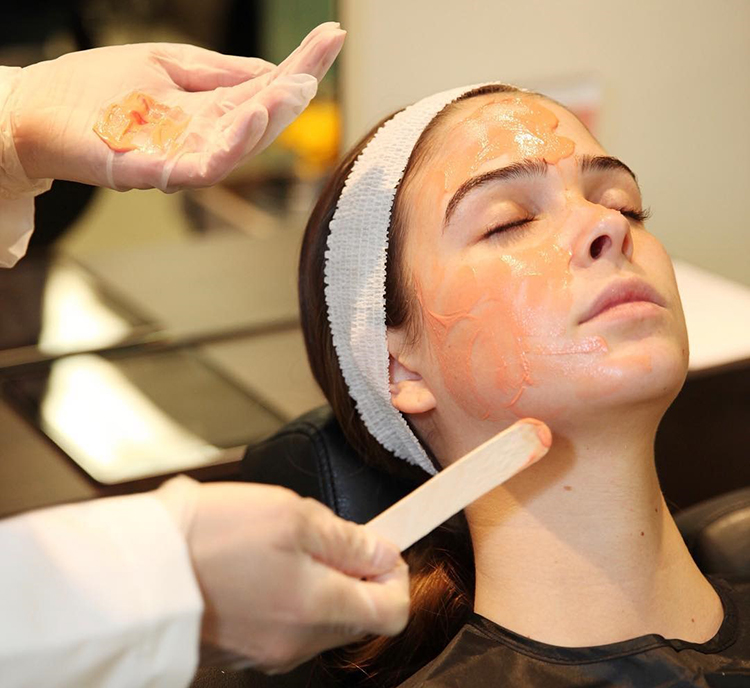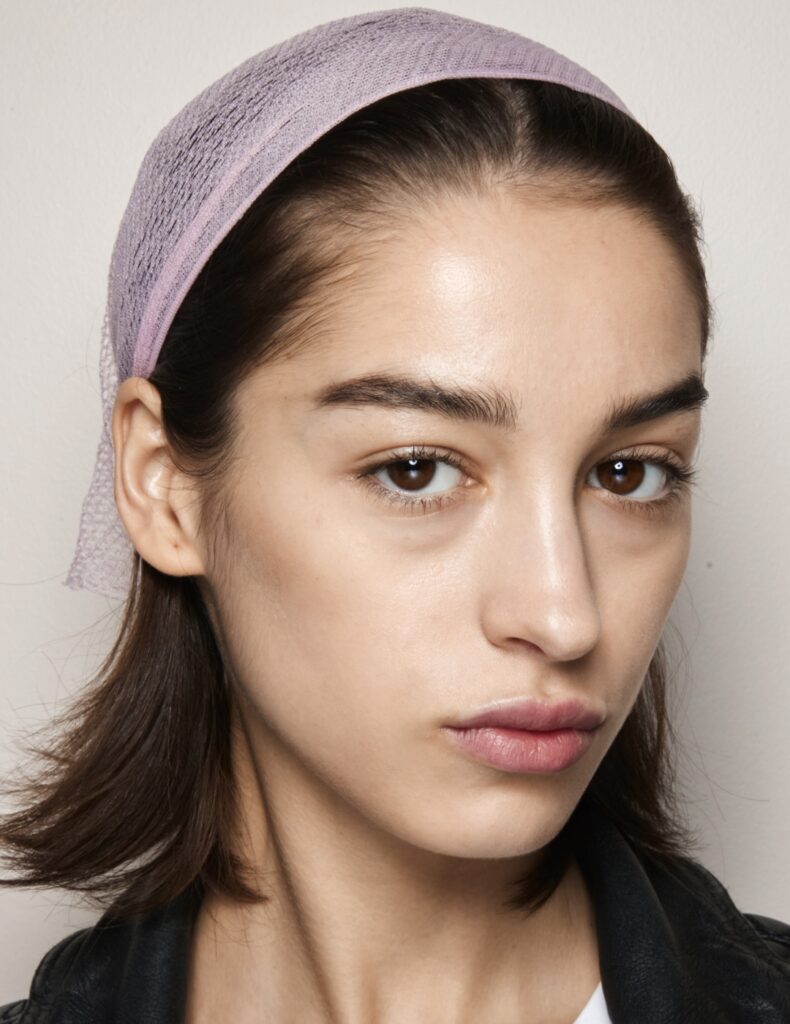We get the experts to explain.
The vision of a lobster-red Samantha in Sex and the City recovering from the aftermath of an aggressive peel did nothing for the treatment’s reputation. Sure, it put it on the map but in doing so that scene struck fear in a generation of women. However, after nearly a decade of recovery time, a good deal of education on the part of Glossier and The Ordinary, the concept of using chemicals as part of our beauty routine is nearly the norm.
Like facials, chemical peels come with a great deal of promises. They say that a pricey treatment will resurface the skin and reveal a smooth and spotless complexion hiding beneath. Where facials cleanse and brighten the skin with moisturizing oils, creams and ointments peels work a little differently. The latter can be used to treat acne, dehydration, dead skin, red marks, scarring and dullness.
‘I think it’s just important to remember that most facials incorporate some form of peel without clients even realizing, ‘ explains Dr Rabia of The Peel Boutique. In truth, peels have been around far longer than most faddish beauty treatments – Dr Rabia cites Cleopatra’s famous milk bath’s as an example of a lactic acid facial. Slowly but surely through the introduction of hyaluronic acid and glycolic acid products, the effects of a feel – the removal of make-up debris, the feeling of smooth bright skin – are seeping into people’s at-home routines. However, facials remain far more popular and far more readily available treatment. To get to grips with the difference between a facial and a peel we asked two experts to explain their pros, cons, side effects and results.
What’s the difference between a facial and a peel?
Dr Rabia of The Peel Boutique: “Any skin beautifying treatment for the face can be considered a facial. Typically, basic facials involve cleansing the skin, the application of certain products and/or masks, and hydration. A peel is a treatment that removes the outer layer of skin, and is primarily focused on exfoliation to brighten the skin. Peels are often incorporated into facials, even though clients may not always realise they are having a peel as part of a facial!”
‘Queen of Facials’ Debbie Thomas: “The basic differences between a peel and a facial is that a peel uses chemical solutions to strip the surface layer of the skin cells away to reveal a newer, healthier layer of skin. A facial will use various products including cleansers and serums to give skin a natural glow and remove dirt and impurities from the pores. This is based on a facial that doesn’t include any additional equipment and machinery, such as laser and IPL.”
How often can you have a peel or a facial?
Dr Rabia: “Weekly (for example in the lead up to an event or wedding, or if there is a specific skin issue such as acne or breakouts), but for general skin maintenance, we advise treatments every 4-6 weeks, depending on skin type.”
Debbie Thomas: “This can really depend on skin types. Generally, I would recommend every 3-4 weeks, but for oilier skin types it can be every 2-3 weeks.”
What can you expect from the results of a peel or a facial?
Dr Rabia: “The effects of a peel are immediate! Skin is instantly brighter and smoother after one peel – moreover, skin tone and texture continues to improve after a series of treatments, as results are cumulative. If you are trying to treat a specific skin concern, a series of treatments will always give you better results.”
Debbie Thomas: “Regular facials improve skin texture and tone, whilst also providing hydration, fewer breakouts and firmer skin. However, to maintain results, you do need to make these regular.”
What can’t you do before or after a peel or a facial?
Dr Rabia: “One of the last few steps of the treatment includes applying sunscreen to protect the skin and also a nourishing and hydrating serum to help the skin heal and boost skin rejuvenation. On an ongoing basis, I would always recommend applying a good sunscreen. Retinol, acid-based, exfoliating and vitamin A containing products should be avoided for 1-2 days after The Peel Boutique treatment (and longer after other peels, depending on the depth of treatment).”
Debbie Thomas: “[Before a facial] around three-days prior, stop using any products that include chemicals such as Retin-A, Glycolic Acid and Lactic Acid. Try not to use any products the morning of and keep your routine light (avoid make-up if possible). [Also] avoid sun exposure 24-hours prior, any facial waxing 24-hours prior and cosmetic treatments prior (like Botox, Fillers etc). [After a facial] do not apply make-up for 24 hours (unless it’s a breathable foundation such as Oxygenetix Foundation), do not use sunbeds/sun exposure for at least 24 hours. [Do] drink plenty of water to keep the skin hydrated, [but] avoid steam rooms, saunas, heavy exercise and products with chemicals for 24 hours.”
What are the side effects of a peel and a facial?
Dr Rabia: “Skin may be more sensitive to the sun after a peel, so SPF needs to be worn diligently. Depending on how sensitive the skin is and on the formulation of the peel, dryness may occur 1-2 days after a peel.”
Debbie Thomas: “Redness and erythema can occur post facial due to exfoliation and the pressure from massage. This can also occur through extraction if the client needs it. Avoid wearing any makeup or using products on the skin for up to 48 hours post facial to give the skin time to heal.”
WATCH: Common mistakes you’re making when you cleanse your face
Who can and who can’t have a peel or a facial?
Dr Rabia: “All skin types, all skin colours and anyone over the age of 16 can have a Peel Boutique peel. In general, it depends on the formulations of the peels as to who they may be appropriate for. Always consult your doctor, but usually anyone who is allergic to any components of the peel (for example those with aspirin allergies should avoid peels containing salicylic acid), anyone who has been on Roaccutane within the past six months (due to increased skin sensitivity) and anyone who cannot avoid direct sun exposure to the treated areas immediately after the peel. Those who are pregnant and/or breastfeeding may also be more sensitive to peels due to hormonal changes.”
Debbie Thomas: “Most facials can be tailored to the individual’s needs, which is what we do in my clinic with our DNA facials. Following a skin consultation, we will provide a bespoke facial for the client’s skin concerns to provide the best results and ensure it is right for them.”











